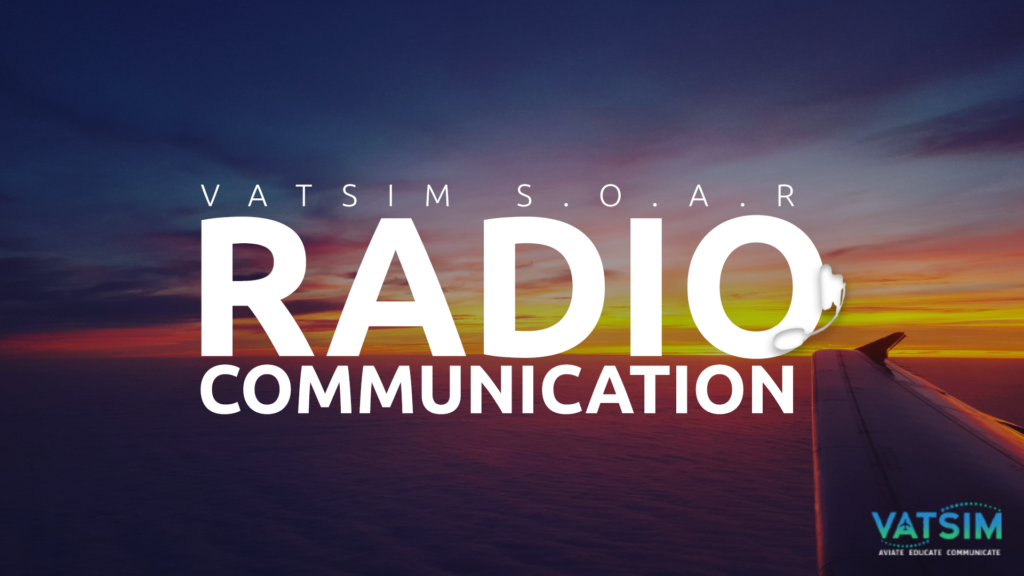
Welcome to another VATSIM SOAR Series – Radio Communication. In this SOAR topic, you will learn essential tips and techniques to improve radio communications while flying in VATSIM.
Short Video: vats.im/soar-radio-video
You’re connected to VATSIM, the frequency in your COM 1 radio is tuned, you hear others talking, but what do you say?
Radio communications is a crucial part of safe flying, yet they are often one of the hardest topics to learn – even for real world pilots! If you are a new pilot or a seasoned veteran, here are a few quick tips to help build your radio confidence!
1: Have a pen and paper on standby.
One of the best tools you can have to build radio skills is a pen and paper. Radio communications are a call and response, and a pen nearby can make jotting down an altitude, heading or frequency a breeze. Then, by writing down what information you need to report to ATC prior to keying up the microphone, it will make your call stress-free!
2: Remember who you are.
It seems obvious, but knowing your callsign will help to identify yourself in a sea of traffic. This tip is especially useful in event airspace. If there are numerous Speedbirds, Uniteds or Lufthansas, make sure you remember which one you are, this will make communications flow and clear up any confusion.
3: Listen more than you speak.
On any frequency, controlled or not, you should spend more time listening than talking. Keeping the radio channels clear for other traffic allows everyone to have a smoother, more enjoyable flight. This means saving your personal chats for a Discord call or over direct message through your pilot client.
4: Cut the fluff.
The most important information ATC needs to know is who you are, where you are and what you need. Cutting down radio calls to succinct information makes calls flow quicker and clearer between pilots and ATC. Try your best to limit filler words such as “umm” when making your radio calls.
5: Wait your turn.
When joining a new or busy frequency, wait for a lul in transmissions before speaking. When multiple people speak at once, the frequency is ‘blocked’ and neither ATC nor pilots can hear what anyone else is saying. Waiting a second to verify no one else is speaking clears the air for everyone.
6: Monitor vs. Contact.
When issuing a new frequency, ATC will either tell you to ‘contact’ the next controller or ‘monitor’ the next controller. When told to contact, swap frequencies and make a call to the controller with the requisite information. If told to monitor the next frequency, do not make a call until ATC contacts you. This is often a tool for busy frequencies, rather than having everyone check in, the controller contacts the next airplane when they can.
7: Watch your volume.
To make sure you come through at a proper volume, ensure your microphone is not too close to your mouth. Pilots can verify their audio level through the settings of their pilot client.
8: Learn the patterns.
ATC communications are a system, every flight will follow roughly the same pattern in regards to what calls you need to make. Once you learn the patterns of what is expected of you at each step in the flight, comms become as simple as plugging in the applicable numbers!
9: Radio checks:
During busy times, Controllers will already have many things to deal with so next time you can do a radio check in busy airspace yourself. Simply set both radios to the same unused frequency or check for the color change on your client.
Radio communications are no joke, most real world student pilots spend hours building up radio skills. But with these tips and a little practice, you will be a radio pro in no time!
